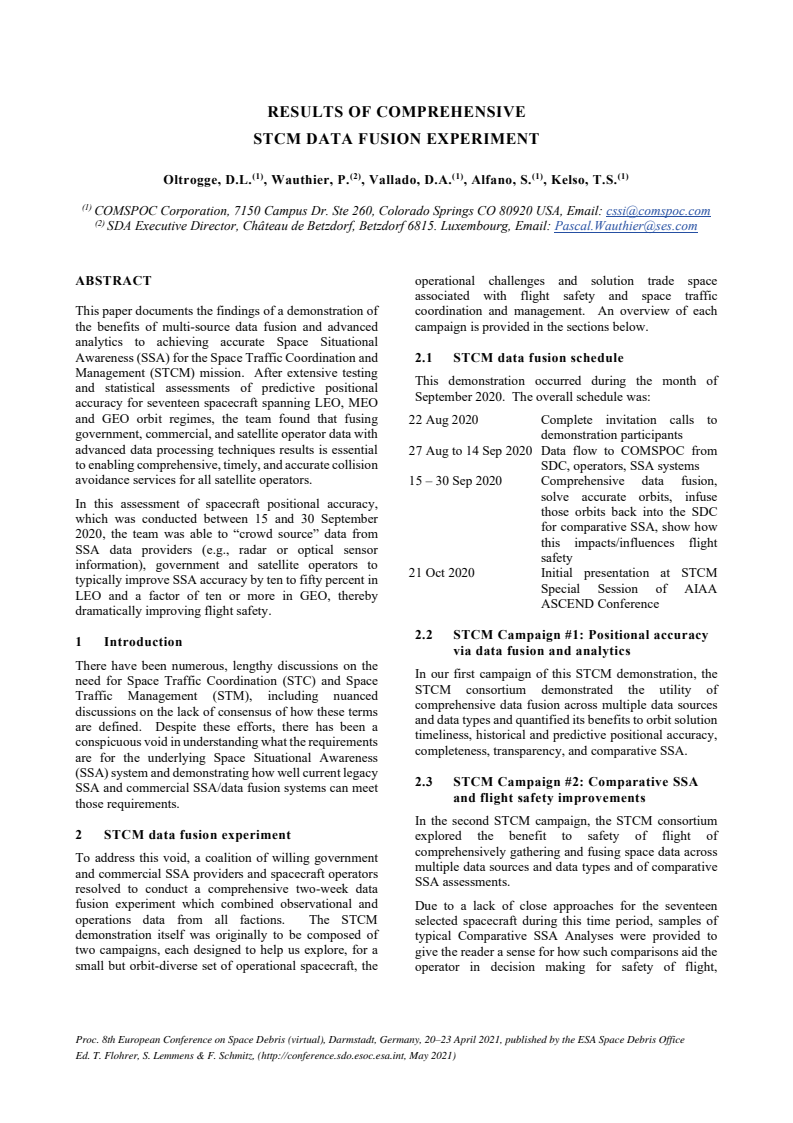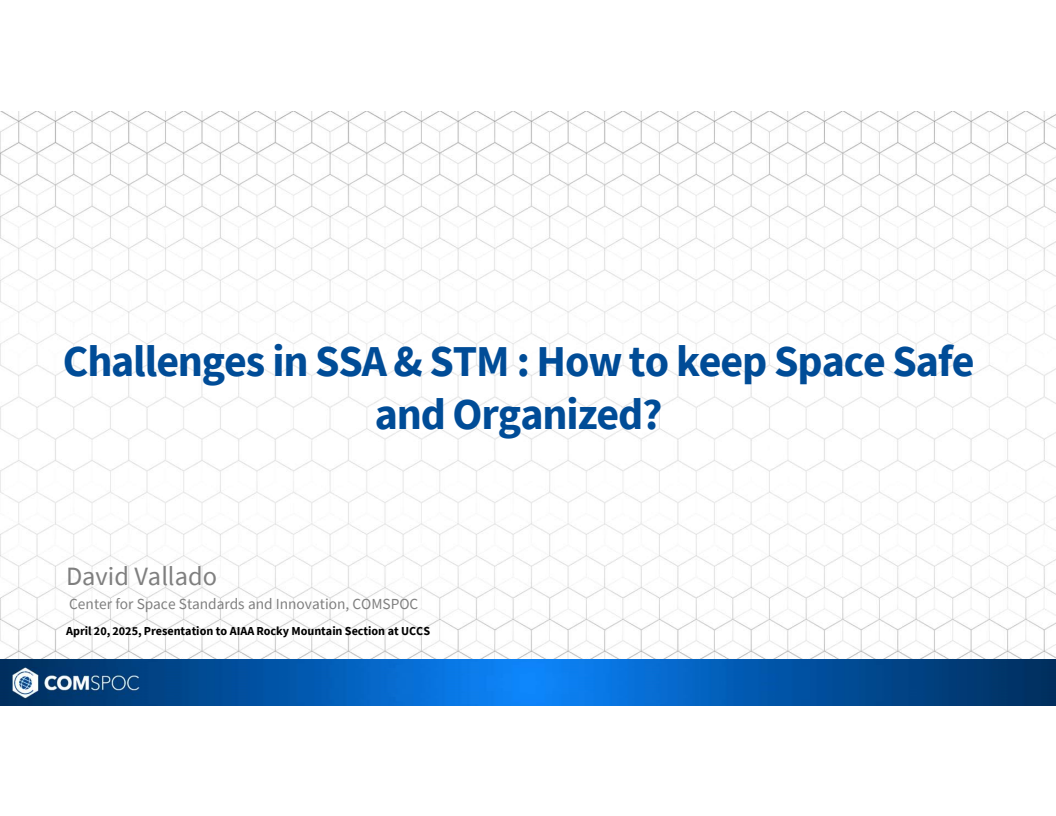Revisiting Spacetrack Report #3


Id: 288
Type: Presentation
Published: 08/21/2006
Event: AIAA/AAS Astrodynamics Specialist Conference 2002
Authors:
Click an author to filter the list of related assets below.Abstract:
Over a quarter century ago, the United States Department of Defense (DoD) released the equations and source code used to predict satellite positions through SpaceTrack Report Number 3 (STR#3). Because the DoD's two-line element sets (TLEs) were the only source of orbital data, widely available through NASA, this code became commonplace among users needing accurate results. However, end users made code changes to correct the implementation of the equations and to handle rare cases encountered in operations. These changes migrated into numerous new versions and compiled programs outside the DoD. Changes made to the original STR#3 code have not been released in a comprehensive form to the public, so the code available to the public no longer matches the code used by DoD to produce the TLEs. Fortunately, independent efforts, technical papers, and source code enabled us to synthesize a non-proprietary version which we believe is up-to-date and accurate. This paper provides source code, test cases, results, and analysis of a version of SGP4 theory designed to be highly compatible with recent DoD versions.
Citation:
Vallado, D.A., Crawford, P., Hujsak, R., and Kelso, T.S., Revisiting SpaceTrack Report #3, AAS/AIAA Astrodynamics Specialist Conference, Keystone, CO USA, 21 Aug 2006, accessible at https://comspoc.com/Resources/Content/Private/C-20220425T152134/Paper/AIAA_2006-6753%20Revisiting%20Spacetrack%20Report%203%20Rev%203.pdf.
Papers with related authors:

Results of comprehensive STCM data fusion experiment
Read More
New Consolidated Files for Earth Orientation Parameters and Space Weather Data
Read More
ORBIT DETERMINATION ISSUES AND RESULTS TO INCORPORATE OPTICAL MEASUREMENTS IN CONJUNCTION OPERATIONS
Read More




Using Spacebook and Cesium to Promote and Enhance Flight Safety
Read More

Actionability and Persistence Of Conjunction Data
Read More

Actionability and Persistence of Conjunction Data
Read More

Practical issues with using a full gravity field
Read More
LEO satellite behavior during the May 2024 Gannon geomagnetic storm
Read More
Deep operator and SSA collaboration for space sustainability
Read More
Synthetic Covariance Production Using a New Digital Approach
Read More
Contrasting the Inflection Points and Efforts in Space Traffic Coordination and Management
Read More
Addressing the debilitating effects of maneuvers on SSA accuracy and timeliness
Read More
Actionability and Persistence of Conjunction Data
Read More
DEEP OPERATOR AND SSA COLLABORATION FOR SPACE SUSTAINABILITY
Read More


Russian ASAT Debris Cloud Evolution and Risk
Read More





Debris Risk Evolution And Dispersal (DREAD) for post-fragmentation modeling
Read More
Sequential Processing of ILRS Observations – Experiences over the last 5 years
Read More

Fragmentation event debris field evolution using 3d volumetric risk assessment
Read More

Application of New Debris Risk Evolution And Dissipation (DREAD) Tool to Characterize Post-Fragmentation Risk
Read More
Orbital Strategies to Mitigate the Solar Exclusion Effect on Space-Based Observation of the Geosynchronous Belt
Read More
Updated Analytical Partials for Covariance Transformations and Optimization
Read More
Sequential Orbit Determination Using Satellite Laser Ranging
Read More
Improved SSA through orbit determination of Two Line Element Sets
Read More


Evaluating Gooding Angles-only Orbit Determination of Space Based Space Surveillance Measurements
Read More
